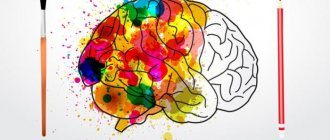Nature is black
Colors are light waves of different lengths that are perceived by human vision and displayed as different shades. Black can be defined as the absence of color at all, since darkness does not reflect light flows, but absorbs them.
On the other hand, artists claim that black is a combination of all possible colors together, which gives many variations of shade: from blue-black to reddish, from charcoal to gray.
Various compounds are used as pigments for black, which are subjected to heat treatment:
soot, obtained after burning the seeds of certain plants (grapes, peaches) burnt bone or bone black, made from charred animal bones black mars, created by oxidizing and burning iron oxide
Natural pigments for black paint are graphite and magnetite, and organic pigments are black aniline and nigrosine.
Video
Huggies Elite Soft diapers, size 2, 4-6 kg, 9400123, 82 pcs.
698 ₽ More details
Huggies Elite Soft diapers, size 1, 3-5 kg, 9400112, 50 pcs.
670 ₽ More details
Bicycle lubricants
Story
The path of the most controversial and mysterious shade, starting from the era of Ancient Rome and ending with the beginning of the third millennium, was traced by the French historian Michel Pastoureau in his monograph “Black. History of color".
People have always been afraid of the dark. All fairy tales and legends, myths and beliefs about monsters and inhabitants of the underground Hell are associated with the color black. In Pastoureau's book, this is succinctly described with the words: “Emerging from darkness, life took shape.” With the development of intelligence and skills, man found a reliable ally in the fight against the blackness of the night - fire. With its help they prepared food, drove away wild animals, and heated homes. At the same time, by burning at fires, ancient people learned to produce artificial dyes: soot, charred tree branches, coal. Then a use was found for the seeds of fruit trees, bark, and nut shells.
Using these primitive “paints” to create rock frescoes, people noticed differences between different types of materials. This is how the black color acquired its first characteristics: shine, texture, density. During antiquity, these shades acquired their first names. So, shiny black was called niger, and matte - ater.
Over time, the term ater became synonymous with something dirty, obscene, repulsive, while niger, on the contrary, received a more positive meaning
In the early Middle Ages, black color was found in the form of separate elements on the coats of arms and banners of knights, in the clothing of merchants and artisans, in the vestments of the highest nobility and courtiers. Still considering this shade a symbol of danger and mystery, people attributed mystical properties to it, creating legends about invincible Black creatures - from robbers to ghosts.
Closer to the 13th century, in the wake of the hunt for witches and sorcerers, ministers of the church and the Holy Inquisition switched from brown robes to black dresses and capes. And after them, representatives of the nobility appreciated the severity and versatility of this shade. Dark robes became an indicator of spirituality and high morality. Black fabrics were highly valued and expensive.
The rapid development of culture at the end of the Middle Ages introduced black elements into painting and mosaic frescoes - more and more artists and craftsmen took dark shades as a basis and used them to express contrasts.
During the Renaissance, cloth became more and more accessible: now clothes in dark colors represent peasants and slaves - black power. And thanks to the great Leonardo Da Vinci, who created the doctrine of the six primary colors of the spectrum, painters begin to comprehend their art as a struggle between light and darkness.
Later, black tones became a symbol of romanticism and were again loved by aristocrats: in Holland, for example, the richest and most luxurious wedding dress was black, made of silk and twill, complemented by white lace embroidery on the collar and sleeves.
In the 18th and 19th centuries, black, along with its other shades, became ubiquitous - from uniforms and craft clothing to elegant dresses of ladies from secular society and the robes of representatives of the highest clergy. At the same time, this color becomes the main symbol of mourning and sadness.
Antique black and victory red
If rock paintings have been preserved from the Paleolithic, then traces of the great Greek civilization remain on fragments of clay vessels.
In the ancient world, artisans used several painting methods. At first it was an image-sign - that is, geometric patterns, for example, a Greek meander, which was used to paint the entire vessel. Then - an image-image, including black-figure painting (6th century BC), in which dark silhouettes stood out in contrast against a terracotta background. At the same time, the classical forms of Greek vases were developed - these are amphoras associated with funeral cults and ritual feasts in honor of the god of wine Dionysus.
Black-figure amphora with the image of Dionysus.
This color choice was not accidental: the opposition of light and darkness runs through the entire Hellenic culture and its philosophy (for example, it is present in Plato’s myth of the cave).
In vase paintings, this struggle is often shown through the plots of the confrontation between Apollo and Dionysus - the god of the Sun and the god of the dark depths of the human soul.
And if in mythology this struggle ended in a draw, then in vase painting light won - after black-figure painting appeared red-figure painting, thanks to which the image became more alive and the drawing freer.
Red-figure amphora with the image of Apollo. Source
Symbolism of black color
Associations that arise when mentioning the color black are as diverse as its shades. It is shrouded in mysticism and secrets, it frightens with the unknown and bottomlessness, it leads you into the world of nightmares and awakens the imagination.
What did black mean in ancient times?
The culture of every nationality will definitely have its own attitude towards black:
In ancient Mexico, during sacrifices, priests smeared their faces and hands with soot, wanting to please the gods. The African religion of voodoo requires the killing of only black animals for rituals. In some equatorial countries it is still believed that women with pitch-black skin have unbridled temperament, including sexual ones. In India, this shade was associated with mother earth and at the same time was responsible for oppression. Therefore, servants in this country always wore dark clothes. In ancient China, black was considered one of the most important symbols of strength and spirituality, and in Japan - nobility.
In Christianity, black was associated with the color of the devil, vice and death, but gradually it acquired a second meaning of humility, the desire to be freed from earthly sins and turned into the “calling card” of monasticism
In the culture of primitive people, black was the main color and was opposed to white: day - night, life - death, purity - dirt, order - chaos, good - evil. Therefore, all magical and religious rituals, especially among African peoples, were based on the use of black. For example, in Zambia, during the Ndembu ceremony, the color black could mean:
evil deeds, bad things, illness and imminent death, witchcraft, damage, loss of luck, ritual death, darkness, sexual desire
In a number of European countries, this color was a symbol of protection from the evil eye. It was believed that if a person, animal or inanimate object has black marks on itself, it is not worthy of envy. Therefore, dark dots were applied to the faces of newborns, animal fur was dyed, and black stones were placed under houses.
Also, the ancestors of modern Europeans were sure that black was a sign of witchcraft and witches. The homes of people suspected of magic and divination were marked with black paint. And the expression “he has a black liver” meant the nasty, bad and evil intentions of a person.
The personification of dark forces through the color black can be traced not only in the mythology and beliefs of peoples, but in literature and painting. Characters who bring threat and death are presented by the authors as carriers of darkness in any form: clothing in dark colors, black hair and eyes, black amulets and jewelry.
Symbolism of black in modern society
The color black retains its gloomy traditional meanings today. The main negative symbols remain:
death, illness, mourning, sadness, sadness, evil, misfortune, misfortune, dirt, meanness, violence, loss, bereavement, sorrow
But not all associations are negative: black is considered the sexiest and most mysterious color. It symbolizes looseness in sexual relations and awareness of one’s desires.
Also, black color attracts various subcultures. Using clothes and accessories in dark shades, representatives of youth movements create their own model of behavior and characteristics that are different from other similar movements.
Black color can become a symbol of loneliness and melancholy, secret love and suffering, exorbitant luxury and oppressed poverty.
Each person puts their emotions and personal experience gained under certain circumstances into the meaning of the color black. For some people, this is a sign with a negative connotation after the loss of a loved one or failure in love, for others it is a symbol of tough decisions, freedom and will.
Shadow Theater named after Caravaggio
For many years, black was popular mainly in the fashion industry. But the Italian artist Caravaggio at the end of the 17th century created with its help a new style of depiction, which was no less in demand among painters than black fabrics among aristocrats.
The new method was called tenebroso (from the Italian “gloomy”), because Caravaggio’s palette contained significantly more dark colors than light ones, and the contrast of bright light and impenetrable shadow created an expressive theatrical effect. It works like this: a beam of light snatches an object from the darkness and models the volume of a figure or object.
Sharp transitions from light to dark make objects look hyper-realistic. And the large size of the canvases (about 3 meters in length and height) creates the feeling that the viewer is watching a scene from life.
Tenebroso can be seen in the painting "The Conversion of Saul". Saul - soon to be Saint Paul - took part in the persecution of Christians for a long time, until one day on the road he saw “from heaven a light surpassing the radiance of the sun.” From this powerful stream he fell to the ground and, hearing the voice of Jesus, believed in him.
Michelangelo da Caravaggio "The Conversion of Saul on the Road to Damascus" (1601).
In the upper right corner of the picture, Caravaggio depicted such a strong light that everything around turns into darkness - although, according to the Bible, this happens during the day. For the first time in the history of painting, the contrast of light and almost black received such dramatic power.
The Roman public had difficulty accepting Caravaggio’s outrageous paintings: they were shocked by both the strange flashes of light and the very tone of the scenes in which sacred events were transferred to the world of ordinary people.
In the painting “The Calling of the Apostle Matthew” (1599–1600), the future preacher is shown with Christ in a tavern.
But the artists liked his tenebroso style - and soon a whole circle of his followers formed (and not only in Italy), who were later dubbed the Caravaggists.
The meaning of black color in psychology
Being a “science of the soul” and the principles of its development, psychology cannot have a single point of view on the meaning of black for a person. The perception of it is determined in each specific case, taking into account the circumstances and psycho-emotional state of the person.
Commitment to this color may mean a desire to retire, hide from the annoying outside world and indulge in one’s thoughts, which can lead to the development of depressive states. Also, black shades can signal an intention to commit a crime or the presence of thoughts of doing something beyond the scope of generally accepted morality.
Black color is the favorite self-expression of gangsters and street hooligans. It symbolizes strength, power and helps to remain unrecognized under cover of night.
In another case, the choice of this color is an indicator of internal struggle, perseverance in an attempt to maintain one’s position.
An indicative example of the desire to understand the philosophy of black color is the famous work of Kazimir Severinovich Malevich “Black Square”. Despite the name, the artist painted his picture with a variety of colors. The layering of all possible shades helped achieve such a deep and captivating image. It was assumed that in the process of looking at the black square, people would subconsciously see a multi-colored cube, signifying the versatility of life. Although some admirers of painting still consider this painting to be a stupid idea that carries no meaning, many note the clear depressing effect of the painting on the mood. Malevich himself, after completing his work, experienced difficulty sleeping for several weeks, which indicates depression and powerlessness.
For men
As a rule, men are less susceptible to public displays of feelings; they are more restrained and focused inside their world. Therefore, in most cases, the color black is perceived simply as a certain shade. Men do not look for hidden meaning in the clothes or household items they purchase; they rely on personal taste, socially accepted rules and convenience.
For example, official meetings and celebrations require a certain dress code. The overwhelming number of men will choose a classic dark suit not because they gravitate towards loneliness and suffer from gloomy thoughts, but because it is customary, comfortable and familiar.
Commoner color and politics
The paintings of the Spanish artist Francisco Goya were no less dramatic. He lived at the turn of the 18th–19th centuries, when the country was in a terrible crisis. As often happens in history, at such moments, in all spheres of culture and art, a man from the people comes to the fore. Goya was interested in the life of mahos (they are machos - dandies from the common people) and makhs (girlfriends of machos - the same dandies). These were residents of the poorest areas of Madrid, who did not take into account either the law or the opinions of others.
Francisco Goya "Mahi on the Balcony" (1808–1814).
You can judge how extravagant women from the people looked like in Goya’s painting “Swings on the Balcony”: their heads are covered with lace mantillas, and short jackets embroidered with gold are on their shoulders. If the last detail could be neglected and not worn unless necessary, then the mantilla became an integral part of the mach outfit.
Wayward people attracted Goya, who liked to say that he himself was a macho, only from time to time he read encyclopedias.
Goya was also a court artist and, having dedicated several canvases to the heroes of the slums, attracted the attention of the aristocracy to these people. Soon, from under his brush, two portraits of famous society ladies appeared in dresses in which fashionable women usually walked around. The first was an image of the Duchess Caetane of Alba (who was long considered the model for the "Nude Swing"), and the second was a portrait of Queen Maria Luisa herself.
Francisco Goya "Portrait of the Duchess Maria Caetane de Silva Alba" (1797).
Francisco Goya "Portrait of Queen Maria Luisa of Parma."
For many years in Spain, from the second half of the 16th century, black was the monopoly of the court nobility. But during the French invasion (from 1808 to 1814), secular fashion changed greatly. Women from Spanish aristocratic families began to dress in the French style in light dresses without corsets with high waists - in this way they showed their conformity. But the Makhs did not want to make concessions to the invaders: they began to wear black and, according to the old tradition, continued to cover their heads with lace capes.
That is, wearing black clothes at that time became an act of resistance to the new political regime.
In this sense, it is very symbolic that Goya in his later years preferred to depict everything in dark colors. At this time, he lived as a recluse in the suburbs of Madrid, hiding from the disfavor of the new king and accusations from the Inquisition for his liberal views. He painted the walls of his own house with a series of frescoes, which are conventionally called “Gloomy Pictures” (literally translated “black”, from Spanish pinturas negras).
For a long time these works seemed like strange macabre subjects of the old and sick Goya, who had almost completely lost his hearing. However, art critic Antonio Muñoz-Casayusa believes that this is how the artist expressed his protest, speaking out against the dominance of French soldiers and the cruelty of Spanish kings. In these frescoes, officials become participants in a witches' coven, and when going on pilgrimages, they beat each other and devour each other.
Francisco Goya "The Sabbath of Witches" (1823). Source
Amazing, unlike anything else, the images became Goya’s last message to his contemporaries, which they were never able to see: the frescoes were in an abandoned house and were discovered only half a century later.
Negative effects of black
It is impossible to assess the influence of the color black on a person’s psycho-emotional state without taking into account his initial position. Someone who has recently suffered mental trauma will see everything that surrounds him in dark colors. And the presence of black color will have an additional depressing effect. A person who is in an excellent mood will not lose vigor and good mood when interacting with black shades.
However, positive perception can be distorted if there are initial prerequisites:
health problems failures in work, business quarrels, misunderstandings with loved ones love experiences interpersonal conflicts self-doubt emotional exhaustion
Fear of the dark can also play a role: a person who experiences anxiety when night falls or when the lights are turned off will subconsciously avoid the color black and its derivatives.
The abundance of black colors in clothes and interiors can give rise to high anxiety, which manifests itself in frequent waking up and inability to sleep. This condition can be accompanied by unreasonable fears for the life and health of family members, constant checks like “Did I turn off the iron?” At the same time, changing the surrounding color scheme to a lighter or brighter one reduces the feeling of anxiety.
Positive and negative value
The meaning of black can be positive or negative, depending on the specific situation.
Positive characteristics include:
- restraint;
- prudence;
- creation;
Negative qualities:
- depression;
- depression;
- emptiness;
- detachment;
- destruction.
Different cultures have different attitudes towards black people. In Asian countries, it symbolizes remnant, a successful career, and high intelligence.
Young children are dressed in dark colors to bring good luck to them.
In Europe and America, black is a symbol of mourning and the dark side of life. Therefore, a significant number of people do not like it and avoid it in everyday life.
Shades of black
Although the name “black” is singular, there are a huge number of shades. The same color can be reflected differently when the lighting changes. Artists play magnificently on this ability of black, applying colors and shadows in such a way that each person sees them in their own way.
Gradations of black depend on density, texture, original pigment, gloss, transparency, various additives and a number of other factors. There are several main shades:
Coal black or silicon color is deep and rich, with a gray shiny tint. Reminds me of burnt wood. It was first used as a definition of hue in 1606.
Ox's blood is bright, shiny with a reddish tint. This shade is popular when coloring hair.
Blue-black - juicy, resinous with a bluish sheen. In the old days, this color was called the raven's wing, which is associated with the iridescence of the crow's plumage under sunlight.
Black as a symbol of seduction and female emancipation
Only symbolist artists were able to create an attractive image using black. In their art, they rejected a realistic approach, believing that it was necessary to create mysterious works, looking at which the viewer could travel through the depths of their own soul.
This was a very unusual statement for the end of the 19th century, when culture everywhere was experiencing a crisis of unbelief. After the publication of Charles Darwin's On the Origin of Species by Means of Natural Selection in 1859, man lost his status as a divine creation, and new works in psychology began to refute the idea of man as his own master.
Against this background, the paintings of the Symbolists were perceived as a cult of beauty and a world of fantasy - sometimes dangerous in their manifestations. Everything mysterious for artists was inextricably linked with unbridled lust and violence - with the shadow side of existence, in which they sought artistic expression.
The main symbolist manifesto was the painting “Sin” by the German artist Franz von Stuck. In it, the theme of the night becomes an allegory of great passions, because when you see a naked female body, you almost immediately meet a terrible serpent. Thus, the biblical figure of Eve became the embodiment of temptation in the spirit of male fantasies.
Franz von Stuck "Sin" (1893).
Symbolists created a whole gallery of images showing the dark - and therefore dangerous - feminine principle.
Strong and independent heroines like Salome, Cleopatra and Judith, ready at any moment to enter into the battle of the sexes, became the archetypal femme fatale of the turn of the 19th–20th centuries, which embodied the ideas of equality between women and men that were relevant for that time.
Franz von Stuck "Judith and Holofernes" (1926).
Combination with other colors
In terms of interaction with other shades, black is universal. It goes well with any color in clothing, interior design, jewelry, and advertising. Some combinations remain constant for a long time, for example, the classic dress “white top, black bottom.” This business combination is used in educational institutions and official state companies. Another familiar option is the yellow-black tandem, which is very memorable.
Black is a unique way of expressing contrasts: any other color will appear sharper and more saturated against a dark background. Soft pink, lilac, beige, gray shades in combination with black acquire expressiveness, and bright green, blue, yellow, purple tones will sparkle with new colors.
Interior
- Undiluted black, except in rare cases, is not used in interior design. It is impossible to stay in such a room for a long time due to the fact that the nervous system is depressed, feelings of being driven into a corner arise, the person becomes aggressive and irritable, emotionally unbalanced, negative thoughts and negative emotions appear.
- It is unacceptable to use this color in the bedroom and children's room, as well as in the kitchen and living room. An exception may be the bathroom and toilet.
- When there is a desire to emphasize something, black can be used. However, to balance the background color, it is important that it be combined with beige or white.
- With a golden tint - pretentious.
- With yellow - extravagant and prestigious.
Lovers of black
There is no single definition of character for lovers of black: a lot depends on a person’s temperament, his environment, sphere of activity, environment of upbringing - each factor is significant and leaves its mark. But there are several classic options:
Fighter
This is a person who knows his capabilities and soberly assesses reality. He tries to go towards his intended goal, despite obstacles and failures. By choosing black, he emphasizes willpower, diligence and the desire to succeed in spite of everything.
Ruler
Such people strive to command and control all aspects of both their lives and the existence of those around them. They are strong in spirit, well erudite, and know how to stand their ground. At the same time, they are conflicting, irreconcilable to other people’s opinions, and always like to remain right.
Closed personality
This person is reasonable, calm in appearance, speaks little, prefers solitude and does not attend noisy companies. However, he is internally ambitious and loves to be appreciated. Such people do an excellent job at their job, slowly but surely climb the career ladder and have at most a couple of good friends.
King
This type is easy to recognize by its demeanor - authoritative, slightly arrogant, but at the same time friendly. Such people like to dress smartly, surround themselves with beautiful and expensive things, and flaunt their wealth. At the same time, a person of this type easily helps others, does not humiliate, and does not demand recognition. However, he does not forget to remind about his merits.
Love for black
Therefore, of course, parents get scared when their children choose black for their drawing. But this is not always a cause for concern. Children's choice of black may be due to its maximum contrast with a white sheet. Also, the black color may indicate that the child is going through a 3-year-old crisis, which is characterized by stubbornness, negativism and denial, while the child may specifically choose a color that the mother does not like. In the future, quite naturally, black becomes a favorite color in the color preferences of teenagers when they go through a teenage crisis, which is also accompanied by adherence to principles in defending their opinions, stubbornness and negativism. In this case, the color black may be a signal to parents that they need to show more flexibility and tolerance towards their child, so as not to increase resistance and help them survive this age-related crisis safely and without “complications.”
Additionally, using black (accompanied by solid colors) to draw comes naturally to people with dark skin color, brown eyes, and black hair. This is how their innate temperament manifests itself; it is through dark tones that they can express their individual perception of the world, mystery, passion and vitality.
And “dislike” for the color black, on the contrary, speaks of a person’s reluctance to give up something, an inability to self-restraint. Black color can be used to compensate for weakness of will, strengthen fortitude, and improve the ability to concentrate.
Use in clothing
Black is the most popular shade of clothing around the world. It is practical, comfortable, beautiful. Uniforms and business suits, dresses, trousers, blouses and shirts, coats and jackets of this color are bought every year on an almost industrial scale. However, the opinion that it is universal and suitable for everyone is wrong. Black color in clothes can highlight imperfections:
enhance shadows and circles under the eyes add age make incorrect proportions of the figure more obvious create an overly gloomy and unsociable image add fatigue and a feeling of staleness
By constantly choosing black clothes, people can unconsciously signal their state of mind. This may be a search for oneself, a desire to get away from the past or, on the contrary, to return to a certain state. A person who prefers black to other colors may be in a borderline state between “yesterday and tomorrow,” when life requires a serious radical decision from him. Dark clothing can be a way of self-expression, an indicator of renunciation of one's principles. It can symbolize a rethinking of your position in the world and the search for new opportunities.
The color black in clothes can serve as a sign of hidden aggression and anger, a desire to hide one's true intentions. Also, this color is capable of subconsciously setting others up for submission.
Characteristic
- Persistence. The ability to withstand the blows of fate and continue moving forward. Such a person is distinguished by perseverance and perseverance.
- Oppression. This color is gloomy, devoid of light. No wonder it is preferred by people who are depressed.
- Straightforwardness. A person who prefers the color black will not act pretentiously, will not lie, and will always tell the truth, even if it is inappropriate. It may be uncomfortable to be around such an individual, but you will never have the feeling that there is a two-faced person nearby.
- Depth. Such an individual behaves ambiguously. You never know what is hidden in it.
- Charismatic. Despite the fact that there is no brightness, this color attracts attention and allows you to win people over. Individuals whose favorite color is black can charm without much effort and conquer their interlocutor.
- If a person constantly surrounds himself with black things and concentrates his attention on them, this indicates a desire to be alone, in a state of peace and quiet, without communication and new acquaintances.
It has the following positive aspects:
- self confidence;
- achieving your goals;
- persistence;
- problem solving skills;
- creativity.
But negative aspects of color can also appear:
- prolonged depression;
- authoritarianism;
- depressed mood;
- selfishness.
Use in advertising
Knowledge of color psychology is successfully used by marketing and advertising specialists. By evoking certain associations and memories, the color black in the promotion of certain goods and services helps to increase demand.
For example, the unconscious correlation of dark shades with sophistication and prestige directs a potential buyer towards luxury products. This is used by both well-known brands of perfumes, clothing and shoes, cars and even food products, as well as start-up companies. Black shades in advertising products help convey information about the exclusivity of the product, its high status and quality to the desired segment of the population.
Who likes this color
Purple color in human psychology - what does it mean who likes it?
It is believed that depressed people who are constantly in a depressed, depressed state may like this shade. This is not entirely true. Successful entrepreneurs and representatives of show business dress in black.
The cassock of Orthodox and Catholic priests is black. In the recent past, schoolgirls wore uniforms of this color. Before the revolution, governesses and teachers dressed in black.
A person can give preference to this shade without experiencing any negative emotions. Sometimes his choice indicates a desire to focus on creativity or self-realization.
Black is a rich, rich color. It is associated with mystery and mystery. It is no coincidence that black and white films arouse more interest among the viewer than bright color films.
The effect of black color on health
Colors can influence not only the human psyche, but also his health. Black, for all its elegance and beauty, can have a negative impact on your physical condition. A sick person subconsciously evaluates the color black as a symbol of failure, mourning, and ruthlessness, which negatively affects the healing process.
The predominance of dark colors in the environment and clothing can provoke a relapse of chronic diseases, give rise to a feeling of depression, oppression, and cause apathy, insomnia and neuroses.
At the same time, some people perceive black as a sign of concentration, a clear system, which allows them to concentrate on treatment, work or other important activities.
* * *
The influence of black on a person’s mental and physical state is as ambiguous and contradictory as the color itself. When assessing specific examples of exposure, there are many factors to consider, ranging from age, gender to hobbies, life experiences and environment.
Peculiarities of perception
Each color carries certain information about the world around us, since everything we see has its own specific forms and conveys certain information. Black color, unlike other colors, does not emit waves: neither long nor short.
It seems to absorb our perception and direct it somewhere into the very depths of consciousness.
Black is rightfully considered the most mysterious color. It affects the human psyche differently than other colors. Even gray can evoke many positive emotions, but black is almost always associated with a bad state of mind.
Psychologists have learned to use this well.
Using tests that use color coloring, they determine the level of depression. Children's fears are identified in this way. When a child paints a picture and uses only dark tones, then the alarm should be sounded. Such drawings mean that the baby is experiencing stress.
The perception of black color may increase or, conversely, decrease. It depends on the psychophysiological state of the person. To improve the internal situation, specialists use color therapy.
To do this, they take bright colors (yellow, green or orange), which contribute to the complete restoration of mental balance, and contrast them with black.
The destructive nature of black can be redirected to creation. To begin with, you can invite a person to write letters (preferably hieroglyphs) on white (or yellow) paper with black paint. Then gradually change the black tone by reducing it. Smoothly switch to a gray shade, and then to a more life-affirming one.
So, imperceptibly, a person’s consciousness begins to tune in to the desired mood.
He forgets about losses and poor health. Anyone who prefers to mourn, after certain psychological manipulations, begins to “open” the soul to the perception of positive emotions.
Personal color perception must be taken more than seriously. Perhaps this way you will prevent low-grade depression in your loved one.
If you leave everything as is, a certain person may develop a very severe form of depression.
Polls say
Currently, the favorite color of Europeans is blue (40 percent of residents prefer it). The “rating” of green is 17 percent, red is 12 percent, yellow is 6 percent, orange is 5 percent. The remaining percentages come from shades of these colors, as well as white and gray.
Like long echoes that mix in the distance and there merge into a dark, deep unity, spacious as night and like light - like long echoes, fragrances, colors, and sounds answer one another. Charles Baudelaire
Rainbow psychology
As children, we all rejoiced at the appearance of a rainbow in the sky after the rain. Everyone tried to memorize the number and sequence of colors of the rainbow. Who among us does not remember such funny phrases as:
- Every
Hunter
Wants
to
Know
Where
the
Pheasant
Goes . _ _ _ _ - How
once
Jak
- Zanar
Head
broke
the
Lantern
. _ _
_ _ - And other options.
Where the first letters of the words mean the corresponding color name:
- Each
one is red; - O
hunter - orange; - Wants
- yellow; - Know
- green; - Gde
- blue; - S
goes - blue; - Azan
- purple.
But we didn’t even think at that time that each color influences us, our character and our life to one degree or another. And now, having already become adults, we can trace the psychological connection of a certain color we prefer with one or another trait of our character.











